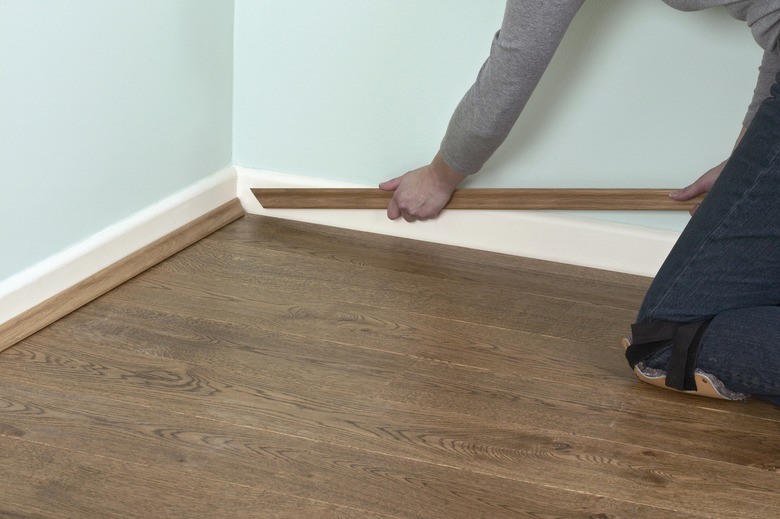How To Calculate Total Square Feet And Order Laminate Flooring
The process of calculating the square footage of a room, or multiple rooms for laminate flooring can be overwhelming to a novice do-it-yourselfer. You're not quite sure how to begin, where to end or the way to know exactly how much flooring material you'll need, but you can relax, as measuring for new flooring only requires a basic understanding of math and measurements.
Materials Needed
Materials Needed
To calculate the total square footage of the floor space in a room to know how much laminate flooring to buy, gather some supplies and have a helper nearby. For this project, you'll need:
Paper Pencil Tape Measure Calculator
Square and Rectangle Rooms
Square and Rectangle Rooms
Square and rectangle rooms are measured exactly the same way. Stand in your doorway and stretch the tape measure across the floor until it reaches the wall directly across from you. If necessary, ask a helper to hold the end of the tape measure against the wall. Bring your end of the tape measure to the center of the doorway. Write down the measurement. Enter the room and measure from wall to wall in the opposite direction of your first measurement. You only need to measure two dimensions of the room: width and length. Write both measurements down. Multiply the two measurements together, such as a 10-foot width by a 12-foot length. The answer — 120 — represents the square footage of the room. Also complete this same process inside of any closets you plan to install flooring in and add their total square footage to the room's total.
Irregular Shaped Rooms
Irregular Shaped Rooms
Not all rooms are perfect squares or rectangles. Some have extra nooks, while others are octagon shaped on one or both ends of the room. Section irregular rooms with extra nooks into squares to measure them. As with standard rectangular rooms, measure each section separately and calculate your measurements. Add all separate measurements together to obtain the square footage of the room. In a room that is octagon shaped on one or both ends, measure from the longest or widest points and calculate it the same as a square room.
The Waste Factor
The Waste Factor
To ensure you have enough flooring material, account for waste, mistakes or other unforeseen issues by adding an additional percentage to the total square footage needed. Contractors and industry professionals commonly add 10 percent of the total square footage to the amount to accommodate waste, mistakes or bad measurements. Add all of your measurements for each room together to arrive at the total square footage and multiply that result by 1.10 to calculate the total amount of square footage needed. For example, if you need 500 total square feet, multiplying by 1.10 represents 550 total square feet.
Order the Flooring
Order the Flooring
Determine the number of boxes you need before ordering your laminate flooring. Each box of flooring should include a notation of the total square footage it covers. One box of flooring may cover 30 square feet. Divide this number into the total square footage of the area you plan to cover. For example, if you have a total of 550 square feet, including waste, divided by 30 equals just over 18 boxes. Round up to the nearest whole number — 19 — to arrive at the number of boxes required to complete your project.
